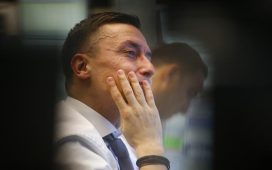Multifactor funds, which control more than $250bn of investor money, have enjoyed a renaissance in their performance over the past two years, while others have continued to struggle.
These strategies include a wide range of strategic-beta funds that provide exposure to two or more risk factors or stock characteristics that have been associated with outperforming the market. There are five factors: quality, momentum, value, low volatility and small size.
When one factor underperforms, multifactor funds’ diversified nature should reduce the impact and safeguard a portfolio without sacrificing its long-term upside, but these factors do not always offer an advantage or move in sync with one another.
Morningstar launches industry’s first unicorn indices
“The argument for factor diversification is simple, but that does not mean selecting and sticking with a multifactor strategy is easy,” said Alan Tung, analyst at Morningstar.
“Multifactor funds are among the most complicated strategic-beta funds available to investors, and many of the most popular failed to perform as well as expected in the years after they were launched.”
Analysis by Morningstar found that regardless of the complexity of the underlying strategy, a few data points, such as the average factor characteristics of a portfolio and the number of stocks it holds, can help identify multifactor funds that should outperform in the future.
According to the authors of the report, multifactor funds that diversify extensively and differ from the market primarily through their risk factor exposures typically look more attractive as long-term investments.
“The best multifactor strategies – and the easiest ones to stick with – are those that keep incidental risks under wraps and rely on their observed factors to drive returns. Broadly diversified portfolios that span hundreds or thousands of stocks tend to fit this description the best,” said Tung.
Four graphs explaining… multi-asset
A multifactor portfolio should emulate its targeted risk factors, Morningstar said, adding that risk factor exposures should be intentional and account for most of the differences between a multifactor portfolio and its parent universe.
Because these portfolios are susceptible to unpredictable performance due to running into unintentional risks, such as taking an outsize sector or stock-specific risk, investors should look for funds that aim to limit non-targeted risks.
Diversification should also go beyond just risk factors. Funds that are more likely to be impacted by stock-specific risks can be identified by comparing the number of stocks in a multifactor portfolio with the number of stocks in its parent universe.











